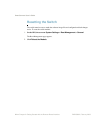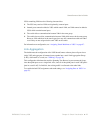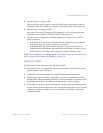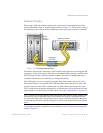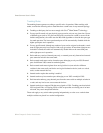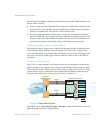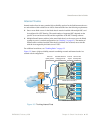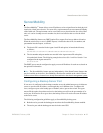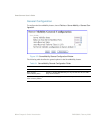SmartConnect User’s Guide
32
Chapter 3: Switch Virtualization BMD00082, February 2009
Trunking Rules
The trunking feature operates according to specific rules of operation. When working with
trunks, consider the following rules to determine how a trunk reacts in any network topology:
Trunking to third-party devices must comply with Cisco
®
EtherChannel
®
technology.
For any specific trunk, only one physical port type can be active at any given time. If ports
of different types (such as 1G ports and 10G ports) are mixed in a trunk (as occurs in the
default configuration), the switch uses the Best Link algorithm to select the best port type
for trunk operation. The lower-speed trunk ports will be automatically disabled while the
higher-speed ports are in operation.
For any specific trunk, although any number of ports can be assigned to the trunk, a maxi-
mum of eight ports may have an active link at any given time. If more than eight ports are
included in a trunk, the switch will automatically disable links on the extra trunk ports
while eight ports are in operation.
Each trunk may consist of internal ports only, or external ports only. Internal and external
ports cannot be mixed in the same trunk.
Each external trunk must consist of member ports belonging to only one VSG. External
ports for different VSGs cannot be trunked together.
Each external trunk must originate from one logical device (one switch or different
switches in the same stack), and lead to one logical destination device (such as a switch,
stack, or other network device).
Internal trunks require that stacking is enabled.
Internal trunks may have member ports belonging to one VSG or multiple VSGs.
Each internal trunk may group internal ports from the same switch or multiple switches in
a stack, and may lead to one or more network devices.
Internal trunks do not support VMs that are assigned to VSGs. Trunking ports that include
VSG-assigned VMs, or assigning VSGs to VMs on ports that are already part of an inter-
nal trunk, may cause unexpected behavior.
These rules apply to any switch when operating independently, or to the set as a whole when
multiple switches are placed in a stacked configuration.



